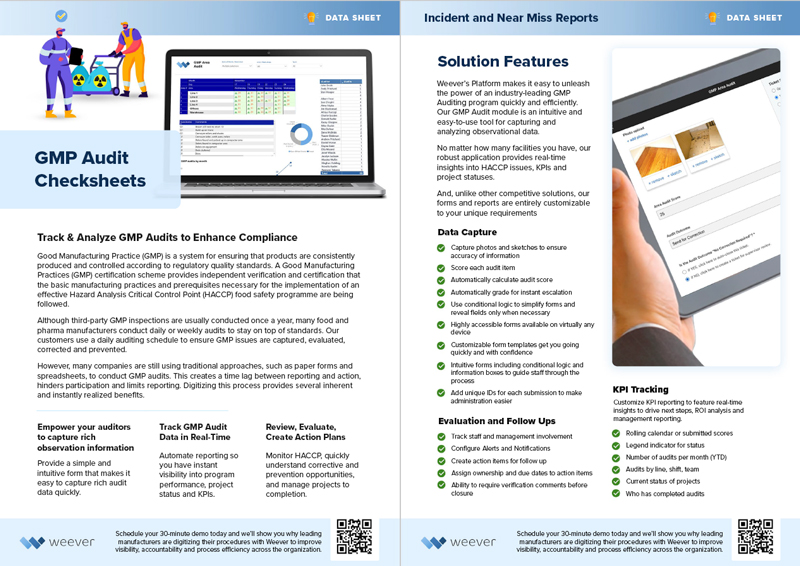Best Practices for GMP Audit Checklist
Andy Pritchard | December 5, 2021 | 4 min read

What does a standard Operational Audit Schedule for a typical food company look like?
If harnessed correctly, GMP audits can have a massive positive impact on your business, including enhancing product quality, brand reputation, operational efficiency and employee engagement.
GMP audits can include visual inspection of standards of environmental hygiene and housekeeping, PPE, hand washing practices, inspection and tests on process parameters and testing allergens, swabbing, etc. GMP audits are a legal requirement, however, the frequency and depth of the audits can be determined by the organization.
Not all audits are created equally. If you are just looking to “check the box” then you can simply use a paper form and spreadsheet and hope for the best. However, you are most likely reading this article because you take food safety and GMP audits very seriously and you want to get the most out of them.
Here are a few best practices you can use to take your GMP audits to the next level.
Best Practice #1: Trim the Fat and Optimize Audits
To ensure an effective audit, ensure the forms you use are as efficient as possible and the field input requirements are directly related to your HACCP study and/or GMP audit requirements.
- Remove all unnecessary questions.
- Review your forms and documentation regularly through a formal review process to ensure the process is optimized.
- Add photo capture capabilities to aid descriptions
Best Practice #2: Scoring & Escalation
Use a simple scoring system to help staff understand next steps and escalation. Add a score for each answer option within each field and then ask the associate to add up the total audit score. You can even have escalation requirements for individual questions.
Best Practice #3: Record observations for “failures”
Comments provide context and offer valuable insights. Comments are especially valuable when something is wrong or an element “fails” the audit. However, commenting adds time to audits and checks. If possible, only require comments to be provided when an audit element “fails” an inspection.
Best Practice #4: Trend your Data
It is a good best practice to capture key performance metrics and analyze trends over time. Some issues may take time to present themselves. If you capture failure outcomes and correlate that with audit submissions, you may be able to use trend data to predict issues before they arise.

bandjlogo

Bell-logo-New

Canadian-Tire-Logo

Diageo-customer-logo

greyston-bakery-logo

hello-fresh-customer

marks-customer-logo

CSL_Limited_logo

monin-logo

Winland Food

Mars-logo-main

rise-baking-customer-logo

Rockwool-Customer-Logo-min

Sportcheck-customer-logo

unilever-customer-logo

walmart-logo-small

husqvarna-customer-logo

Ajinomoto_logo

Peet's_Coffee_logo

Royal-Canin-Logo
